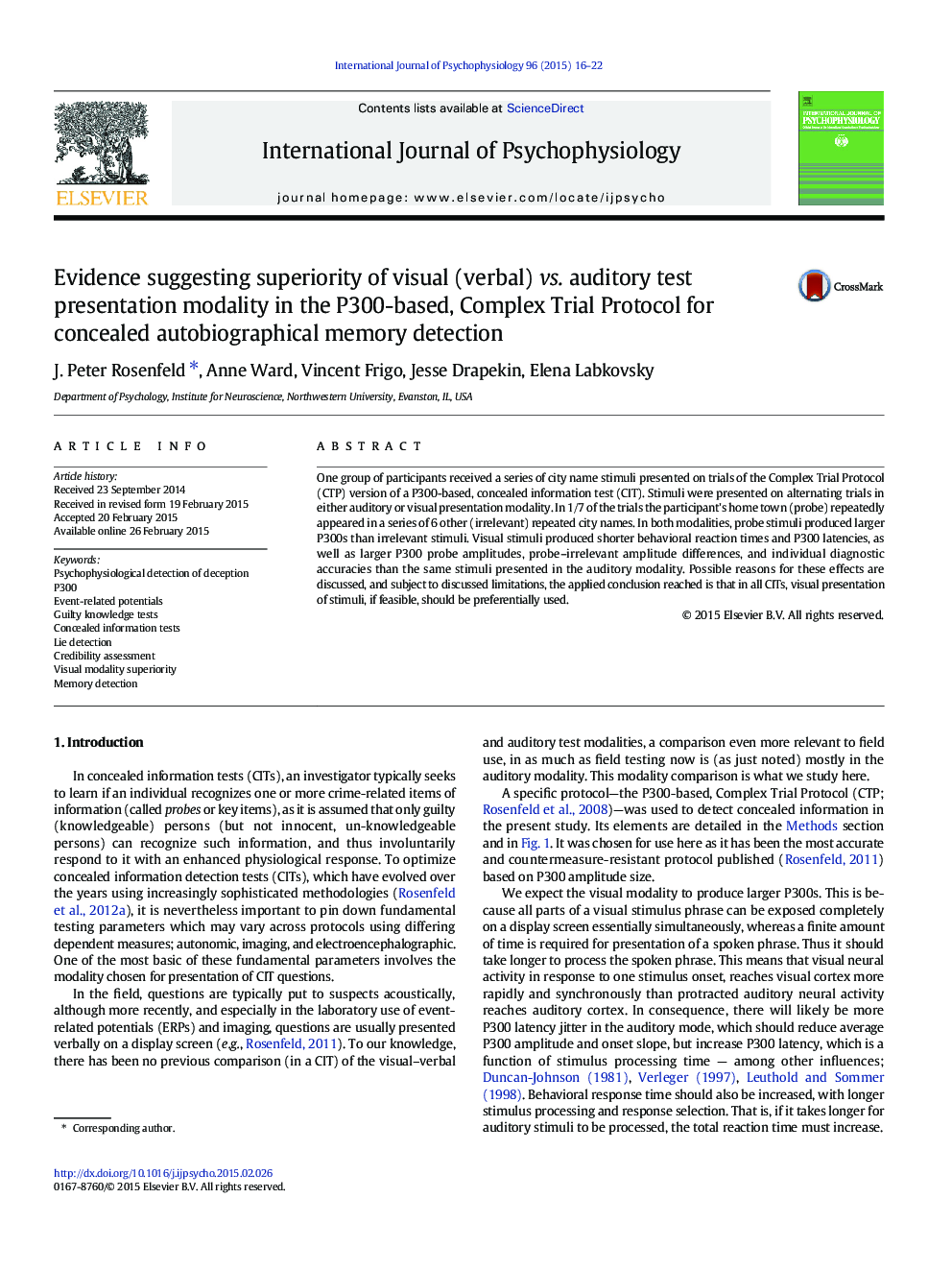| Article ID | Journal | Published Year | Pages | File Type |
|---|---|---|---|---|
| 929865 | International Journal of Psychophysiology | 2015 | 7 Pages |
•Visual, & auditory stimuli were compared within subjects in a P300-based CIT.•Visual stimuli produced faster behavioral reaction times and P300 latencies.•Visual stimuli produced larger probe–irrelevant P300 differences, and accuracy.•Visual presentation is recommended for all CITs, when feasible.
One group of participants received a series of city name stimuli presented on trials of the Complex Trial Protocol (CTP) version of a P300-based, concealed information test (CIT). Stimuli were presented on alternating trials in either auditory or visual presentation modality. In 1/7 of the trials the participant's home town (probe) repeatedly appeared in a series of 6 other (irrelevant) repeated city names. In both modalities, probe stimuli produced larger P300s than irrelevant stimuli. Visual stimuli produced shorter behavioral reaction times and P300 latencies, as well as larger P300 probe amplitudes, probe–irrelevant amplitude differences, and individual diagnostic accuracies than the same stimuli presented in the auditory modality. Possible reasons for these effects are discussed, and subject to discussed limitations, the applied conclusion reached is that in all CITs, visual presentation of stimuli, if feasible, should be preferentially used.
